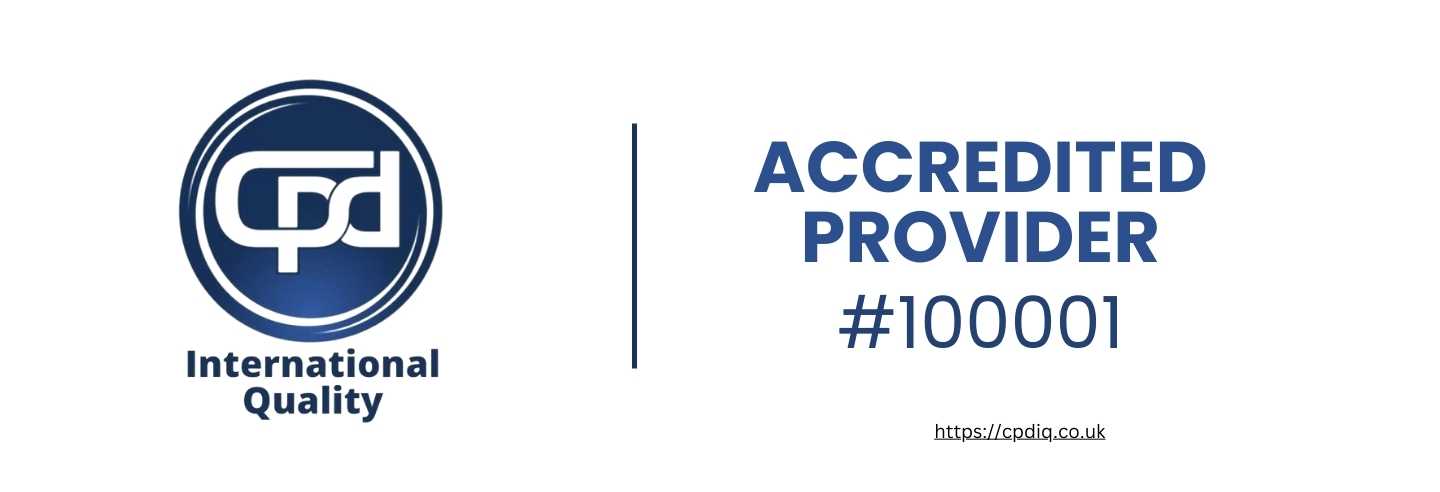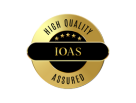
The use of cryptocurrency and other digital assets has been growing enormously in the financial industries. Ensuring reliable information for these assets has important implications for financial reporting and compliance. This article aims to provide an overview of the accounting for cryptocurrencies and digital assets. It will examine the regulatory environment currently facing the industry, some basic accounting principles, and practical issues faced by the industry.
Quick Overview
Accounting for cryptocurrency and digital assets requires understanding complex regulations, valuation, and reporting standards. This blog provides guidance on managing these assets while remaining compliant and financially accurate.
Topics Covered:
✅ Basics of crypto accounting.
✅ Valuation and reporting methods.
✅ Regulatory considerations.
✅ Risk management strategies.
Understanding Cryptocurrencies and Digital Assets
Cryptocurrencies are decentralised digital currencies secured by cryptography and blockchain technology, with examples like Bitcoin and Ethereum, while digital assets encompass a broader range including NFTs and tokens, differing in their functionalities and characteristics.
What are Cryptocurrencies?
Cryptocurrencies are digital currencies secured by cryptography and decentralised through blockchain technology, exemplified by Bitcoin and Ethereum among others, revolutionising global financial transactions and digital asset management.
Definition and Examples (Bitcoin, Ethereum)
Cryptocurrencies and digital assets are electronic (or virtual) forms of money that utilise cryptography for security and are typically decentralised, with transactions recorded in a distributed ledger secured by a network of computers using blockchain technology. Popular examples include Bitcoin, the first and still the most valuable cryptocurrency, and other cryptocurrencies and digital assets such as Ethereum (known for its smart-contract capability, which provides functionality for decentralised applications), Ripple (XRP), Litecoin, and Bitcoin Cash. Each has its features and intended uses but shares the core characteristic of being decentralised and secured by cryptography.
How Cryptocurrencies Work
Cryptocurrencies and digital assets are digital currencies that operate on a technology called blockchain. Blockchain is a distributed network of computers (nodes) where participants maintain a distributed ledger of transactions. In a cryptocurrency system, decentralisation is fundamental, aiming to avoid a central point of failure. The blockchain network uses cryptography to secure transactions. Miners compete to solve complex mathematical problems to validate transactions and add them to the blockchain, a process known as mining.
What are Digital Assets?
Digital assets refer to intangible assets stored electronically, including cryptocurrencies and digital assets like Bitcoin and Ethereum, as well as non-fungible tokens (NFTs) and utility tokens used within blockchain networks, enabling ownership, access rights, and transactions in digital and physical contexts.
Definition and Types (NFTs, Tokens)
Digital assets are intangible assets in electronic format, encompassing various types such as cryptocurrencies and digital assets (e.g., Bitcoin and Ethereum), as well as non-fungible tokens (NFTs) and different token structures like utility tokens and security tokens. These assets serve as foundational components for decentralised applications (dApps). NFTs, for instance, are unique digital items used to represent specific works or attributes in virtual environments, particularly in art and entertainment industries.
Differences Between Cryptocurrencies and Other Digital Assets
While all cryptocurrencies are technically digital assets, not all digital assets qualify as cryptocurrencies and digital assets. Cryptocurrencies and digital assets function primarily as mediums of exchange or stores of value and are typically fungible. In contrast, NFTs and certain tokens may represent ownership or access rights to other assets (digital artworks or physical goods) and are often non-fungible. Tokens within blockchain ecosystems can serve diverse purposes, including access to services, voting rights, or incentives, depending on the specific ecosystem's design.
Regulatory Framework and Standards for Digital Assets
The regulatory landscape for digital assets, overseen by bodies like the SEC and FCA, aims to ensure legality, ethics, and financial stability while focusing on investor protection and innovation amidst evolving global frameworks.
Overview of the Current Regulatory Environment
The regulatory landscape for digital assets, overseen by bodies like the SEC and FCA, ensures legality, ethics, and financial stability. It focuses on investor protection, market integrity, and combating financial crimes globally while fostering innovation under varying jurisdictional approaches.
Key Regulatory Bodies (e.g., SEC, FCA)
Regulatory authorities closely monitor the digital asset space with increasing vigilance. These bodies include the Securities and Exchange Commission (SEC) in the US and the Financial Conduct Authority (FCA) in the UK. They enforce laws, rules, and regulations governing the legality, ethics, and conduct of financial activities involving digital assets. This includes investor protection, market integrity, and the prevention of financial crimes such as money laundering and fraud. Given the global jurisdictional differences, navigating these regulations can be complex, leading to varying regulatory frameworks for companies operating in the global digital asset market.
Relevant Legislation and Guidelines
While specific legislation and guidelines vary by country, they typically focus on consumer protection, anti-money laundering (AML), and counter-terrorism financing (CTF). In the United States, the SEC provides guidance on digital asset classification and regulation. In the United Kingdom, the FCA mandates registration and compliance with AML regulations for businesses involved in cryptocurrencies and digital assets. Meanwhile, the European Union is developing the Markets in Crypto-Assets Regulation (MiCA) to establish legal clarity, enhance consumer protection, and foster innovation.
Accounting Standards for Cryptocurrencies
Accounting standards for cryptocurrencies and digital assets, governed by IFRS and GAAP, classify them as intangible assets. They are initially recorded at cost, with subsequent measurement reflecting impairments and revaluations, navigating challenges posed by their volatile market values.
International Financial Reporting Standards (IFRS)
Principles for accounting cryptocurrencies and digital assets are provided under International Financial Reporting Standards (IFRS). Under IFRS, cryptocurrencies and digital assets are not classified as financial assets. Instead, they are typically treated as intangible assets under IAS 38. They are initially recognised at cost and subsequently measured at cost less any accumulated impairment or revaluation allowances. Managing the inherent volatility of cryptocurrency values poses a challenge.
Generally Accepted Accounting Principles (GAAP)
Similarly, in the United States, Generally Accepted Accounting Principles (GAAP) specify accounting for cryptocurrencies and digital assets as a separate line item from intangible assets, specifically as an intangible asset. Impairment testing applies here as well, with any decrease in the cryptocurrency's value below cost resulting in an impairment loss. Conversely, gains are not realised until the asset is sold. This approach can lead to significant fluctuations in reported earnings.
Future Developments in Regulation
Future regulatory developments for cryptocurrencies and digital assets are anticipated to prioritize AML enhancements, consumer protection, and financial stability, amidst growing scrutiny over stablecoins and the rise of central bank digital currencies (CBDCs) globally.
Proposed Changes and Emerging Trends
The regulatory landscape for cryptocurrencies and digital assets is constantly evolving, with ongoing changes and proposed new legislation. Two emerging trends include:
- The rise of central bank digital currencies (CBDCs) in several countries.
- Increased regulatory scrutiny globally over stablecoins and initiatives such as the MiCA legislation in the EU, aiming to establish a comprehensive regulatory framework. Future developments are expected to focus on.
- Enhancing anti-money laundering (AML) and counter-terrorism financing (CTF) measures.
- Strengthening consumer protection.
- Bolstering financial stability in the digital asset market.
Accounting Principles for Cryptocurrencies
Recognition and measurement of cryptocurrencies and digital assets depend on control and initial costs, with ongoing valuations and revenue recognition adhering to specific criteria to ensure accurate financial reporting and tax compliance.
Recognition and Initial Measurement
Recognition and initial measurement of cryptocurrencies and digital assets hinge on acquiring control for transaction recognition and initial cost plus attributable expenses for objective valuation amid volatility, ensuring accurate financial reporting.
When to Recognise Cryptocurrency Transactions
Cryptocurrency transactions should be recognised when the entity obtains control over the cryptocurrency. These thresholds for recognition and measurement are crucial for accurate financial reporting, ensuring transactions are recorded in the correct period.
Initial Measurement Criteria
Generally, cryptocurrencies and digital assets are initially measured at cost, which includes the purchase price plus directly attributable costs to bring the asset to its current condition and location. This basis provides a clear, objective value at the acquisition time. However, due to cryptocurrencies' significant volatility, the key focus lies in how entities document and account for these assets to track their fair value over time.
Subsequent Measurement
After initial recognition, cryptocurrencies and digital assets are typically measured at either cost less accumulated impairment losses or at fair value less any subsequent impairment losses, providing flexibility in reflecting their market values amidst ongoing volatility.
Valuation Methods (e.g., Cost, Fair Value)
Once identified, a cryptocurrency may be measured using one of two valuation methods: cost and revaluation (when permitted). Cost, in this instance, is the cryptocurrency’s initial cost less any accumulated impairment losses. Revaluation (when permitted) involves measuring fair value at a chosen revaluation date, adjusted for subsequent impairment losses. Revaluation provides a more accurate reflection of the cryptocurrency's current market value but introduces volatility into financial statements due to daily market fluctuations.
Impairment Considerations
Cryptocurrencies recognised as intangible assets require an annual impairment test. If the carrying amount exceeds the recoverable amount (fair value less costs to sell or value in use, whichever is higher), an impairment loss must be recognised. Given the volatility of cryptocurrency values, impairment reviews may need more frequent updates to ensure financial statements reflect the latest values accurately.
Revenue Recognition
Cryptocurrency revenue recognition adheres to clear criteria: identifying contracts, obligations, and transaction values, ensuring GAAP-compliant treatment for consistent financial reporting.
Accounting for Cryptocurrency Revenues
The recognition of revenue in cryptocurrency transactions depends on the transaction's nature. For instance, mining rewards are recognised as revenue ongoingly if the miner possesses an indisputable right to receive them, and if it's likely that future economic benefits will accrue. Conversely, when cryptocurrency is received as payment for goods or services, revenue is typically recognised upon completion of the performance obligation (i.e., delivery of goods or services).
Criteria for Revenue Recognition
These criteria outline the steps to recognise revenue from cryptocurrency transactions, akin to any other revenue stream. They involve identifying the customer contract, defining performance obligations, determining transaction prices, allocating prices to each obligation, and recognising revenue as obligations are fulfilled. GAAP mandates that cryptocurrency revenue be treated identically to other forms of revenue.
Tax Implications
Cryptocurrency transactions are subject to varying tax treatments globally, often classified as commodities or property. Compliance with local tax laws is crucial to accurately report gains or losses from buying, selling, or trading cryptocurrencies.
Taxation of Cryptocurrency Transactions
Taxation of cryptocurrency transactions varies by jurisdiction, generally treating them as commodities or property. Buying, selling, or trading cryptocurrencies can trigger taxable events, with gains or losses subject to taxation. Compliance with local tax laws is crucial for taxpayers engaging in these activities.
Record-Keeping and Reporting Requirements
Accurate bookkeeping is essential for managing tax implications. Entities must maintain detailed records of transactions, including dates, prices, and amounts transferred or received. This ensures accurate calculation of gains and losses, facilitates income tax filings, and meets reporting obligations, protecting taxpayers from penalties or audits by tax authorities.
Accounting Principles for Digital Assets
Recognition and measurement of digital assets require establishing control and expected economic benefits, with initial and subsequent valuations impacting financial reporting and tax compliance.
Recognition and Initial Measurement
Recognition and initial measurement of digital assets involve determining their eligibility as assets based on expected economic benefits and control over access. This process includes assessing costs directly attributable to acquisition or establishing fair value at acquisition date, ensuring transparent financial reporting thereafter.
Criteria for Recognising Digital Assets
In order to be recognised in financial statements, digital assets must meet the requirements of an asset – the entity must hold a genuine claim over the asset and expect future economic benefits from it, which can be reliably measured with respect to its cost or fair value. Control is tested by examining whether the entity exercises the power to derive economic benefits from an asset by restricting other entities’ access to those benefits. This is typically the case if the entity holds the private key to a cryptocurrency or other key legal rights regarding another digital asset. Once control is established, digital assets should be recognised in financial statements to ensure transparent and reliable reporting.
Initial Measurement Approaches
For example, the initial measurement could be at cost; that is, it could include any costs directly attributable to the acquisition of the asset, which would include the cost of purchase, transaction costs, and other costs to bring the asset to its intended use. For some digital assets, particularly those acquired through mining and similar methods, the initial measurement could be at fair value at the date of acquisition. After establishing the initial value of an asset, subsequent measurements and financial reporting can proceed with appropriate guidance.
Subsequent Measurement
Subsequent measurement of digital assets involves choosing between the cost method, which maintains assets at historical cost with minimal impairment adjustments, and the revaluation model, allowing for periodic updates to fair value to reflect current market conditions in financial statements.
Valuing Digital Assets Over Time
Assets measured at fair value subsequently require additional measurement. Entities can choose between the cost method or the revaluation model. Under the cost method, assets are carried at cost with fewer accumulated impairment losses. Under the revaluation model, there is an option to revalue to fair value at each reporting date. Regular valuation ensures current market conditions are reflected in financial statements, presenting assets at their true value.
Handling Impairments and Revaluations
Valuation of digital assets involves impairment testing. If the carrying amount of digital assets exceeds their recoverable amount, impairment must be recognised by adjusting the asset's disposal value. The carrying amount is compared to the higher fair value less costs to sell, or lower value in use. Revaluation gains are recognised in Other Comprehensive Income (OCI) unless they reverse a previously recognised loss. Revaluations should occur regularly, with impairment testing conducted when necessary. Periodic valuations ensure accurate presentation of asset values in financial statements.
Revenue Recognition
Revenue recognition for digital assets hinges on satisfying performance obligations with a high likelihood of economic benefit receipt. For NFTs, it occurs upon control transfer to the buyer; for tokens, it aligns with service delivery or milestone achievement, ensuring accurate portrayal of economic activity in financial statements.
When to Recognise Revenue from Digital Assets
Revenue is recognised when the performance obligation is satisfied and it is probable that the entity will receive economic benefits. For NFTs, revenue is recognised upon transfer of control to the buyer, while for tokens, it is recognised when associated services are provided or milestones are achieved. This ensures accurate reporting of the entity's economic activities in financial statements.
Specific Considerations for NFTs and Tokens
Costs should be expensed when incurred, unless there is a reasonable expectation of future economic benefits. However, the unique and indivisible nature of NFTs and tokens can complicate compliance. Depending on whether tokens grant or imply control elements, revenue may be recognised over time or at a point in time. Failing to appropriately analyse the nature of digital assets and apply the correct revenue standards can lead to inaccuracies in financial reporting, obscuring the true performance of the entity.
Tax Implications
Tax implications for digital assets vary globally, commonly treating them as property subject to capital gains tax upon sale or exchange. Accurate record-keeping of transactions is crucial for compliance, ensuring entities meet reporting obligations and manage tax liabilities effectively.
Tax Treatment of Digital Assets
Tax treatment of digital assets varies by jurisdiction but generally categorises them as recognised income or capital gains. Cryptocurrencies and digital assets are often taxed as property, with transactions triggering capital gains tax. Income from mining or staking may be treated as ordinary income. Cryptocurrencies are typically regarded as property rather than currency for tax purposes. Understanding precise tax treatment in each jurisdiction is crucial for proper compliance and legal adherence.
Compliance and Reporting Obligations
Entities holding digital assets must maintain detailed transaction records, including date, value, and nature, to estimate taxable income accurately. These records are essential for tax reporting, preparing tax returns, and meeting reporting obligations. Entities should stay updated with evolving tax laws to ensure compliance. Effective tax management is vital for mitigating risks and ensuring transparency in financial reporting.
Practical Challenges and Solutions for Digital Assets
The volatility of digital asset markets requires robust valuation methods, secure transaction practices, and effective record-keeping to ensure accurate financial reporting and regulatory compliance.
Volatility and Valuation
Digital asset markets' volatility necessitates robust valuation methods for accurate financial reporting, including averaging prices and hedging strategies to stabilize asset values.
Managing Volatile Asset Values
The inherent volatility of digital assets poses significant challenges for valuation and financial reporting. Robust valuation methods are essential to address these complexities. While volatility cannot be eliminated, averaging prices over specific periods can mitigate its impact by smoothing highs and lows. Hedging strategies also play a crucial role in minimizing price fluctuations. Regular valuation updates are necessary, as relying on single-day or last-price data may not provide a true and fair view for financial reporting users.
Reliable Valuation Techniques
Using reliable valuation techniques is critical for accurate financial reporting. Digital assets can be valued based on market prices, discounted cash flows, or valuation multiples (e.g., revenue multiples). The selection and application of these methods should align with the characteristics of digital asset investments and the availability of market data. Consistency in their use enhances reliability and comparability of net asset values.
Fraud and Security Concerns
Fraud and security concerns in digital asset transactions demand strong measures like encryption, authentication, and vigilant monitoring to prevent unauthorized access and maintain trust in financial operations.
Ensuring Secure Transactions
Efforts must be intensified to safeguard digital assets and ensure secure transactions. Firstly, entities need robust protection measures to store digital assets securely and thwart hacker attacks. This includes data encryption, two-factor authentication for logins, and utilizing hardware wallets or cold-storage facilities.
Secondly, ensuring safe transactions is crucial to protect investors’ wealth and foster trust. Offenders seeking personal gain through attacks on digital assets and companies must be prosecuted. As digital assets gain importance in public welfare, enhanced security protocols in storage systems are imperative.
Detecting and Preventing Fraud
Effective risk management and internal controls are vital for preemptively identifying fraudulent activities. Regular audits can uncover flaws in processes, systems, and procedures. Directors should ensure thorough investigation of duplicate or suspicious transactions and utilize blockchain analysis tools to trace transaction origins and cross-reference with known data on illicit actors or networks.
Clear roles and responsibilities should be defined for activities, transactions, and asset purchases across the organization. Employees must adhere to protocols set by senior management for purchasing, accessing wallets, and using digital assets. Establishing a mechanism for raising concerns and doubts is essential, with management ensuring corrective measures and adherence to procedures.
Record-Keeping and Audit Trails
Effective record-keeping of digital asset transactions, detailing dates, values, parties involved, and transaction purposes, is essential for regulatory compliance and financial transparency. Maintaining clear audit trails ensures readiness for regular audits, enhancing accountability and accuracy in financial reporting.
Maintaining Comprehensive Records
Accurate records of digital asset transactions, including date, value, counterparty, and purpose, are essential for regulatory compliance and financial reporting. Blockchain technology, with its immutable nature, can facilitate reliable record-keeping, ensuring transparency and auditability.
Ensuring Audit Compliance
Regular engagement with the market and maintaining a clear audit trail of digital asset transactions are critical for audit readiness, whether for quarterly, annual, or scheduled audits. Internal audit systems should be robust, complemented by external audits conducted by professionals knowledgeable in digital assets. These measures uphold the accuracy of financial statements and compliance with digital asset accounting standards, enhancing credibility in financial reporting.
Integration with Traditional Accounting Systems
Integrating digital assets into traditional accounting systems is challenging due to compatibility and regulatory complexities. Solutions include bespoke software for accurate valuation and compliance, ensuring seamless financial reporting.
Challenges of Integrating Digital Assets into Existing Systems
Despite being highly digitised, integrating digital assets into current accounting systems presents significant challenges. Issues such as compatibility, data quality, and regulatory compliance must be effectively addressed before digital assets can be accurately accounted for. Institutional systems and infrastructure need a progressive digital approach to accommodate digital assets, ensuring accurate financial reporting and regulatory adherence.
Solutions and Best Practices
One effective solution is leveraging bespoke accounting software tailored for digital assets, which automates valuation updates, and tax calculations, and secures data storage. Additional best practices include regular training for bookkeeping staff, keeping software updated, and establishing clear procedures for handling digital assets. Successful integration ensures digital assets are seamlessly integrated into overall accounting systems.
Tools and Resources for Cryptocurrency Accounting Professionals
CoinTracker and CryptoTaxCalculator simplify cryptocurrency accounting with automation, while AICPA and ACCA provide vital training and certifications for digital asset expertise.
Software Solutions for Cryptocurrency Accounting
CoinTracker and CryptoTaxCalculator automate transaction imports for accurate valuations and simplified tax reporting, offering real-time portfolio tracking and robust security for efficient financial management and compliance.
Overview of Popular Accounting Software
Several third-party accounting software programs cater to managing cryptocurrency and digital assets, such as CoinTracker, CryptoTaxCalculator, and AccountingSuite. These tools can automatically import transactions from supported exchanges. For transactions from self-hosted wallets or unsupported platforms, manual input is necessary but can be streamlined for timely updates. Once set up, these tools automatically calculate asset valuations with each cryptocurrency transaction, saving significant time and ensuring accurate monthly or quarterly accounting. They also facilitate direct export of tax reports to tax preparation software, simplifying compliance with tax authorities' requirements.
Features to Look for in Accounting Software
Key features in accounting software for digital assets should include connectivity with major cryptocurrency exchanges, automated transaction tracking, real-time portfolio valuation, robust data security measures, and adherence to accounting standards. Considerations like ease of use, reporting capabilities, and customer support are also crucial for selecting software that enhances accuracy, efficiency, and compliance in accounting processes.
Professional Organisations and Training Cryptocurrency Accounting
AICPA and ACCA memberships offer essential training and certifications like CCA and BCPA for mastering cryptocurrency accounting, ensuring competence in blockchain technology and digital asset taxation.
Relevant Professional Bodies (e.g., AICPA, ACCA)
Membership in organisations like the AICPA or the Association of Chartered Certified Accountants (ACCA), among the largest and most prestigious accounting bodies, enhances jobseekers' prospects by providing access to training resources, networking opportunities, and certifications that bolster professional credibility. These memberships also keep accountants informed about best practices and regulatory updates.
Training Programs and Certifications
Various training paths and certifications cater to professionals in cryptocurrency accounting, from foundational courses on blockchain technology to advanced programs focusing on digital asset taxation and accounting practices. Certifications such as Certified Cryptocurrency Auditor (CCA) and Blockchain Certified Professional Accountant (BCPA) require completion of training programmes or online exams to validate candidates' expertise in the field.
Future Trends and Considerations
Emerging trends in cryptocurrency and digital asset accounting focus on enhanced blockchain security, AI-driven automation, and evolving regulations, necessitating continuous learning and adaptation for professionals to stay competitive.
Emerging Trends in Cryptocurrency and Digital Asset Accounting
Emerging trends in cryptocurrency and digital asset accounting include enhanced blockchain security, AI-driven automation of transactions, and evolving global regulations for stability and investor confidence.
Advances in Technology and Tools
New technologies and tools are revolutionising cryptocurrency and digital asset accounting, enhancing efficiency and reliability. Blockchain technology continues to evolve, becoming more secure and transparent, while innovations like smart contracts automate complex transactions. Integration of AI and machine learning in accounting software further enhances capabilities, promising robust solutions for businesses in this evolving financial sector.
Changes in Regulatory Landscape
The global regulatory environment for cryptocurrencies and digital assets is constantly evolving. Regulators worldwide are developing comprehensive frameworks to address unique challenges such as money laundering and data scraping, aiming to protect consumers, bolster investor confidence, and ensure financial stability. Businesses must stay abreast of these regulations as they evolve to comply with new rules and mitigate risks effectively.
Preparing for the Future
Preparing for the future in digital asset accounting involves staying agile amidst regulatory changes and technological advancements. Continuous learning through professional development and adapting internal processes are essential to stay competitive and compliant in this evolving field.
Adapting to Ongoing Changes
Businesses and accounting professionals in the digital asset space must recognize that these changes are just the beginning. For instance, while the US SEC takes a strict stance on securities regulation, other nations may adopt more innovation-friendly approaches. Early adopters can gain a competitive edge in securing new business over less agile competitors. Keeping abreast of technological advancements and regulatory shifts is crucial. Regular review of how these changes impact business operations is essential to update internal policies, procedures, and invest in suitable accounting software for effective digital asset management. Ultimately, businesses that adapt swiftly will thrive in the future landscape.
Continuous Learning and Professional Development
Continuing professional education (CPE) or development (CPD) is crucial for accountants in cryptocurrency and digital asset accounting. It involves gaining updated certifications, understanding blockchain technology, digital asset valuation, and relevant legal aspects. Attending specialised training, conferences, and joining professional bodies like AICPA or ACCA ensures accountants remain informed and effective in this evolving field.
Conclusion
Cryptocurrency and other digital assets must be accounted for by recognising their unique characteristics in accordance with relevant accounting standards and full compliance with the law and emerging regulations. Businesses, accountants, and other stakeholders should stay updated with evolving practices and new technologies to master digital asset management and recording practices. This approach ensures the production of reliable financial statements while navigating the complexities of this dynamic domain.










